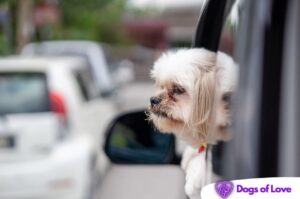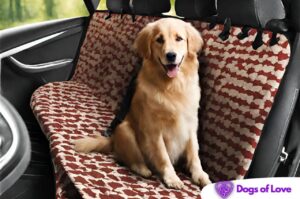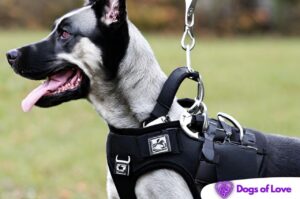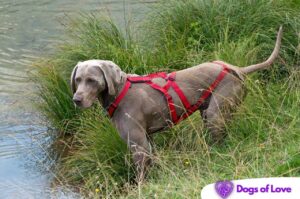Ensuring the safety of our beloved canine companions during car journeys is a priority for responsible pet owners.
Dog seat belts provide a crucial means of restraining dogs in vehicles, preventing injury to both the pet and passengers in case of sudden stops or accidents.
However, a common question arises concerning the optimal attachment point for these seat belts—should they be fastened to a dog’s collar or a harness?
In this discussion, we aim to delve into the reasons and considerations surrounding the choice between collars and harnesses when it comes to securing our furry friends during car travel.
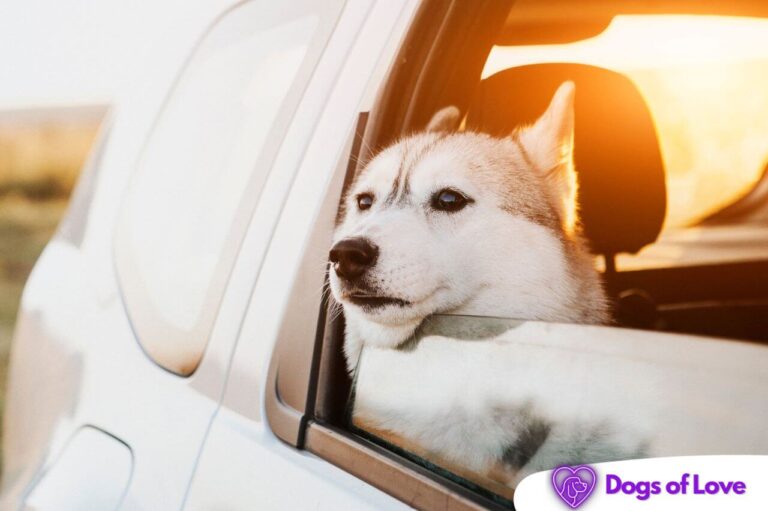
What is a dog seat belt, and why should I use one for my pet’s safety in the car?
A dog seat belt is a safety restraint designed to secure your canine companion within a vehicle, providing a means to protect them and the passengers in the event of sudden stops, turns, or accidents.
Functioning much like a regular seat belt, it typically consists of a strap that attaches to your dog’s harness or collar at one end and to the car’s seatbelt buckle or latch at the other.
The primary goal of using a dog seat belt is to ensure the safety and well-being of your pet during car travel.
It helps to prevent your dog from roaming freely within the car, minimizing distractions for the driver and reducing the risk of injury to the dog or other occupants in case of a collision.
By restraining your dog safely and securely, a dog seat belt promotes a safer and more controlled environment, allowing you to focus on the road while ensuring your pet remains secure and protected.
Reasons why clipping a seat belt to a harness is the better option
Attaching a seat belt to a harness is widely considered the better option for securing your dog during car travel, and several compelling reasons support this choice.
First and foremost, harnesses are designed to disperse force across a dog’s body, reducing the risk of injury during sudden stops or accidents.
Unlike collars, which could strain a dog’s neck or even lead to choking, harnesses distribute pressure more evenly.
Additionally, harnesses provide better control and restraint, minimizing the chances of your dog slipping out or escaping from the seat belt, which can be a significant concern with collar attachments.
Moreover, harnesses offer a more comfortable and ergonomic fit for your pet, allowing them to move around to some extent while remaining safe and secure.
All in all, clipping a seat belt to a harness not only enhances your dog’s safety during car rides but also ensures their comfort and well-being, making it the preferred option for many responsible pet owners.
What are the Different types of harnesses available on the market?
In the market, various harnesses cater to different dog walking styles and preferences.
Back clip harnesses feature a single D-ring on the upper back, making them easy to put on and suitable for well-behaved dogs.
Y-shaped harnesses resemble the letter “Y” and distribute pressure evenly, offering comfort and control.
Front clip harnesses have an attachment point on the chest, aiding in reducing pulling and encouraging better leash manners.
Dual clip harnesses combine front and back attachment points, providing versatility in training and control.
Step-in harnesses allow easy wear as dogs can step into them, securing them around the back. Each harness type serves a specific purpose, allowing pet owners to choose based on their dog’s behavior, training needs, and comfort preferences.
Step-by-step guide on how to attach a dog seat belt to a harness
Attaching a dog seat belt to a harness is a simple process that ensures your pet’s safety during car travel. Here’s a step-by-step guide to help you secure your dog properly:
Choose a Compatible Harness:
Ensure that your dog’s harness is compatible with seat belt attachments. Most harnesses designed for car safety will have a designated attachment point.
Adjust the Harness:
Make sure the harness fits your dog snugly but comfortably. It should not be too tight or too loose. Follow the manufacturer’s guidelines for fitting.
Locate the Seat Belt Attachment:
Check your vehicle’s seat belt buckle or latch system and locate the attachment point for the dog seat belt. This is usually a metal clip or latch compatible with your dog’s seat belt.
Fasten the Seat Belt:
Insert the metal clip or latch of the dog seat belt into the vehicle’s attachment point and secure it by clicking it into place.
Attach the Harness:
Connect the other end of the dog seat belt to the harness. Look for the designated attachment point on the harness, often found on the back, and secure the clip or latch into it.
Adjust Tension:
Ensure that the seat belt is not too tight or too loose, allowing your dog to sit or lie down comfortably without being able to move around too freely.
Double-Check the Security:
Give the seat belt a gentle tug to ensure it’s securely attached to both the vehicle and the harness. Your dog should be safely restrained without any slack.
Test and Monitor:
Before hitting the road, let your dog get used to the restraint by taking a short test drive. Keep an eye on your pet’s comfort and adjust as needed.
By following these steps, you’ll provide your dog with a safe and secure way to travel in the car, ensuring their well-being during every journey.
Tips on making sure your pet is safe when travelling in the car
Ensuring your pet’s safety during car travel is paramount, and these tips can help provide a secure and comfortable journey for your furry friend.
First, invest in a proper harness designed for car safety, and permanently attach your pet to the seat belt using this harness to prevent any movement that could lead to injury.
Place your pet in the back seat; this not only minimizes distraction but also protects them from airbags in case of an accident.
Use a pet carrier or crate for smaller animals, securing them in the car to prevent them from moving.
Never allow your pet to stick their head out of a moving vehicle, as this can be dangerous and cause injury.
Lastly, bring essential items such as water, food, and comfort to keep your pet at ease during the trip.
Regular breaks for bathroom breaks, stretching, and short walks can help alleviate stress and make the journey more enjoyable for your beloved pet.
In conclusion
When securing your furry companion in a vehicle, harnesses unquestionably emerge as safer and more comfortable than collars for attaching dog seat belts.
Harnesses distribute pressure evenly across a dog’s body, reducing the risk of injury or choking that may occur with collar attachments.
They provide better control and restraint, minimizing the chances of escape or slipping during car rides.
Moreover, harnesses prioritize the comfort of your pet, allowing them to move around more naturally and sit or lie down comfortably.
Ultimately, the overarching concern is the safety and well-being of our canine companions; choosing to use a harness with a dog seat belt is a prudent decision for responsible pet owners aiming for a secure and pleasant travel experience.





